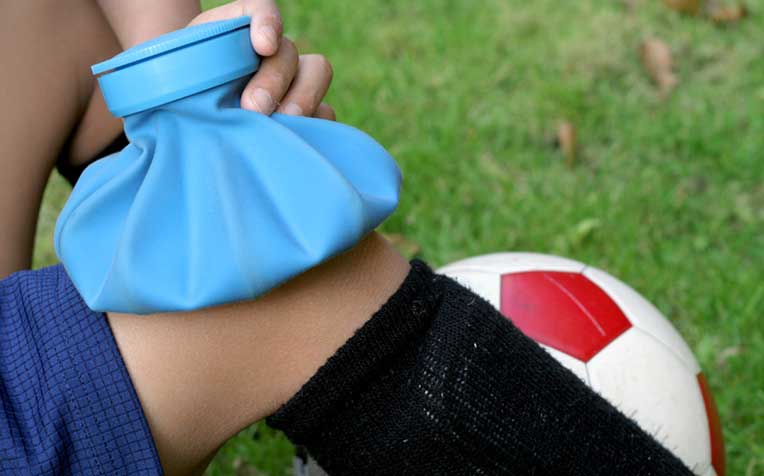HealthXchange will NEVER ask you to transfer money over a call. If in doubt, call the 24/7 ScamShield helpline at 1799, or visit the ScamShield website at www.scamshield.gov.sg.

Tendon injuries are often reported in athletes involved in high-impact sports.
Athletes who regularly use repetitive movements such as tennis players or footballers are at higher risk of developing tendon injuries. However, injury can also happen to people through trivial activities such as lifting or carrying a heavy object.
Older adults may be at higher risk due to falls or being overweight which put more stress on the lower joints.
Tendon injury
Patellar tendinitis (jumper's knee)
Patellar tendinitis is an injury that affects the tendon connecting your knee cap (patella) to your shinbone. The patellar tendon helps your muscles extend your lower leg so that you can kick a ball, pedal your bicycle and jump up in the air.
Causes
- Commonly known as jumper's knee, patellar tendinitis is most common in athletes who are involved in frequent jumping, running or kicking.
- Patellar tendinitis is a common overuse injury as a result of repeated stress on your patellar tendon. The stress results in tears in the tendon that, as they become more numerous, cause inflammation in the tendon.
Symptoms
- Knee pain is the first symptom of patellar tendinitis. It worsens with physical activity.
- Knee pain is usually relieved with rest but may be persistent in severe cases.
- Swelling may be present.
Diagnosis
- Usually made on case history and clinical examination.
Treatment
- The conservative approach to treating patellar tendinitis aims to reduce strain on the tendon and to gradually build up the tendon's strength.
- Your doctor may suggest that you avoid running and jumping and recommend physiotherapy to stretch the tendon and quadriceps, with the aim of returning to your previous level of exercise intensity.
- Medications to reduce pain, swelling and inflammation may also be given.
- A patellar tendon strap that applies pressure to your patellar tendon to distribute force away from the tendon may be given to relieve knee pain.
Ref: S13
Also, check out our other articles on pain of the leg and feet:
Knee Osteoarthritis (OA Knee): Symptoms, Tips, Treatment and Exercises
Home Remedies for Knee Pain and Shin Splints
Runner's Knee: What It Is and How to Prevent
Tips to Prevent Common Running Injuries
Contributed by
Public Events
Get the Health Buddy App
© 2025 SingHealth Group. All Rights Reserved.














 Get it on Google Play
Get it on Google Play